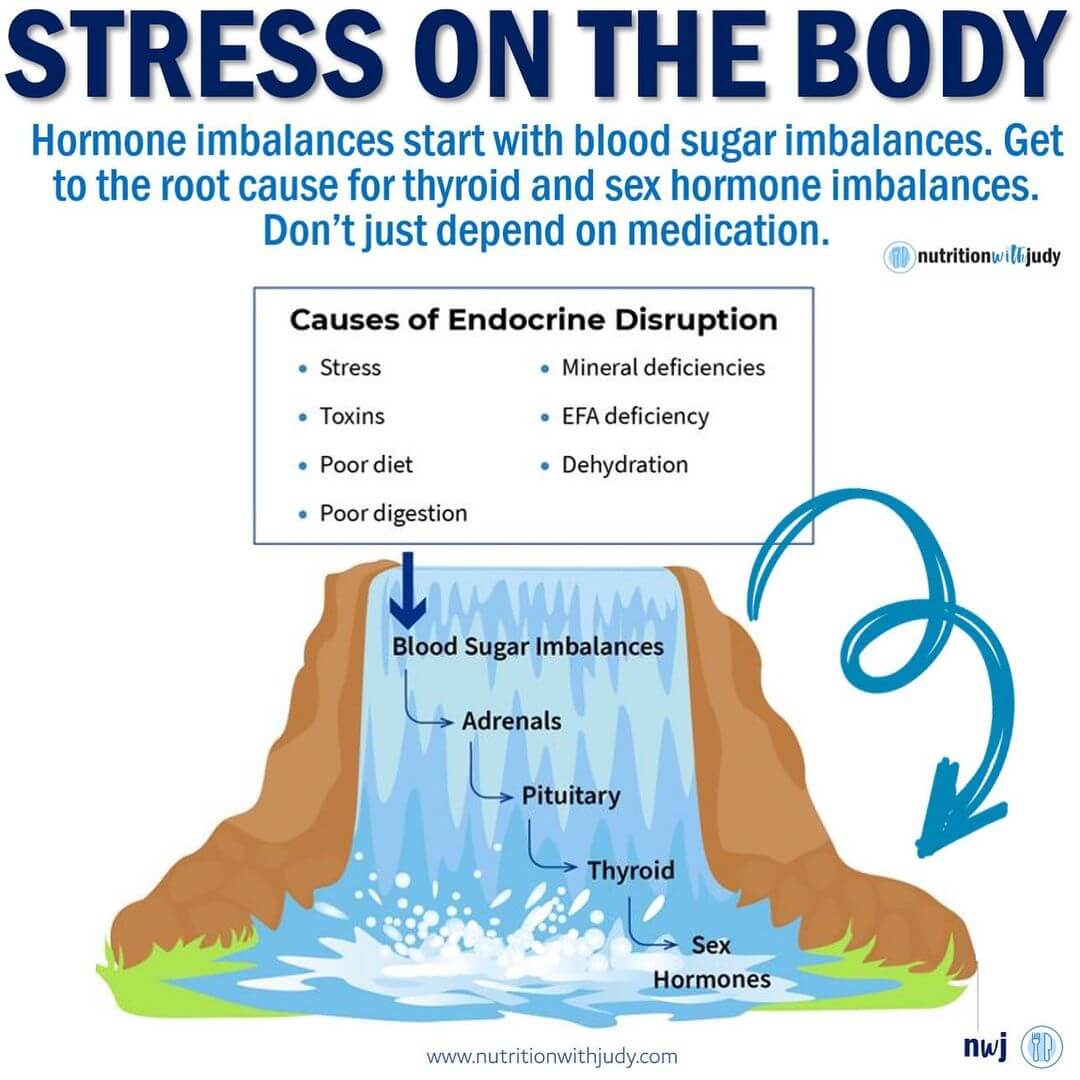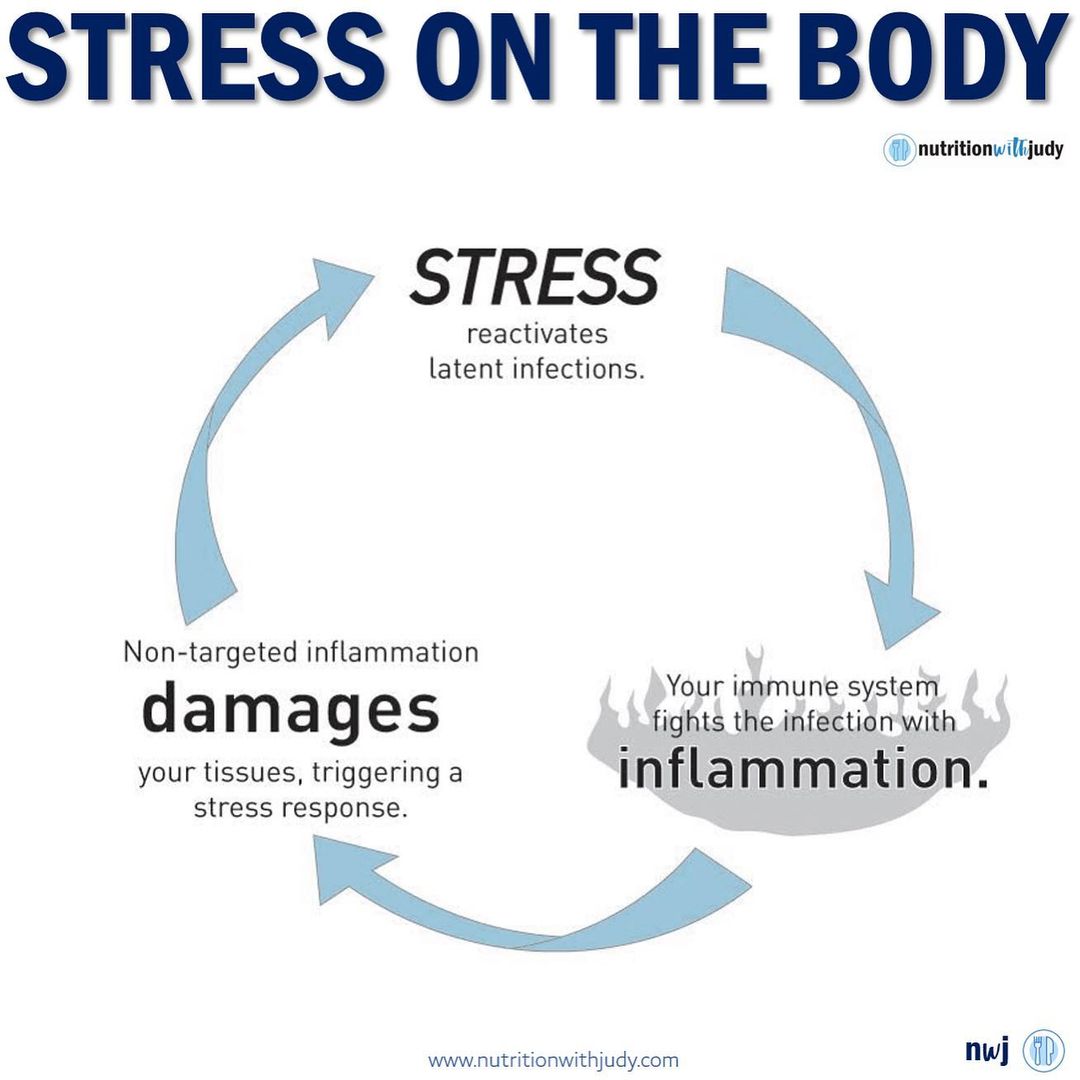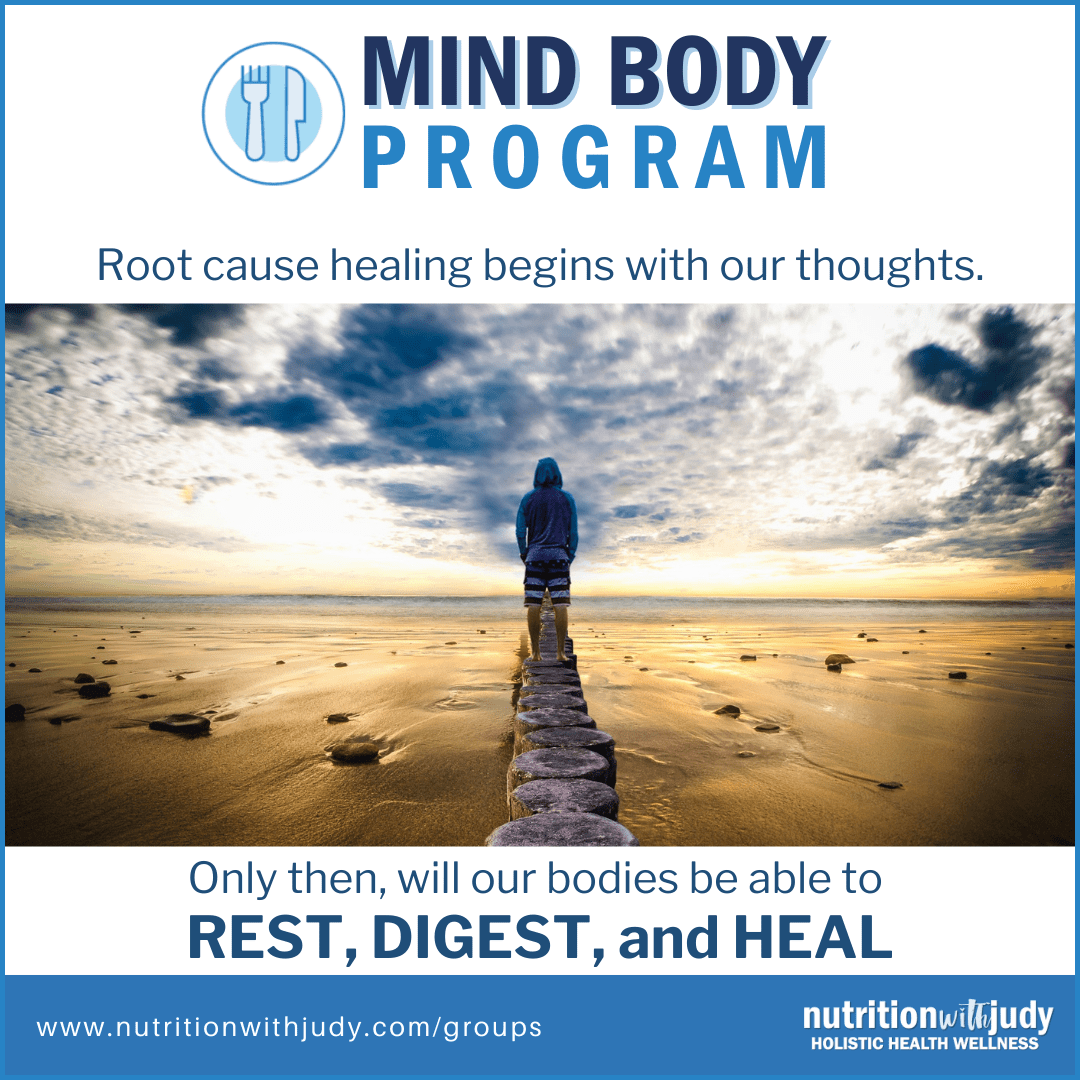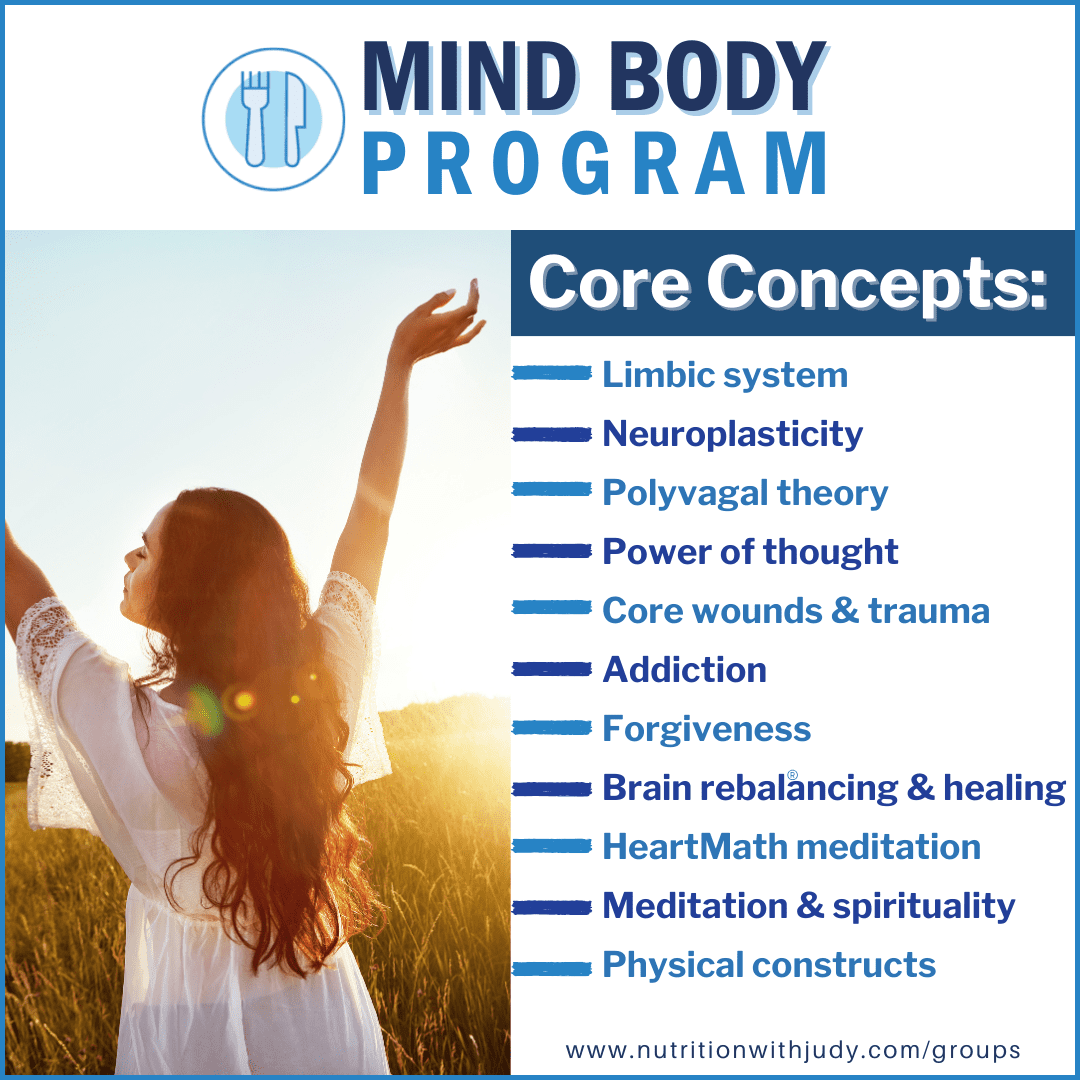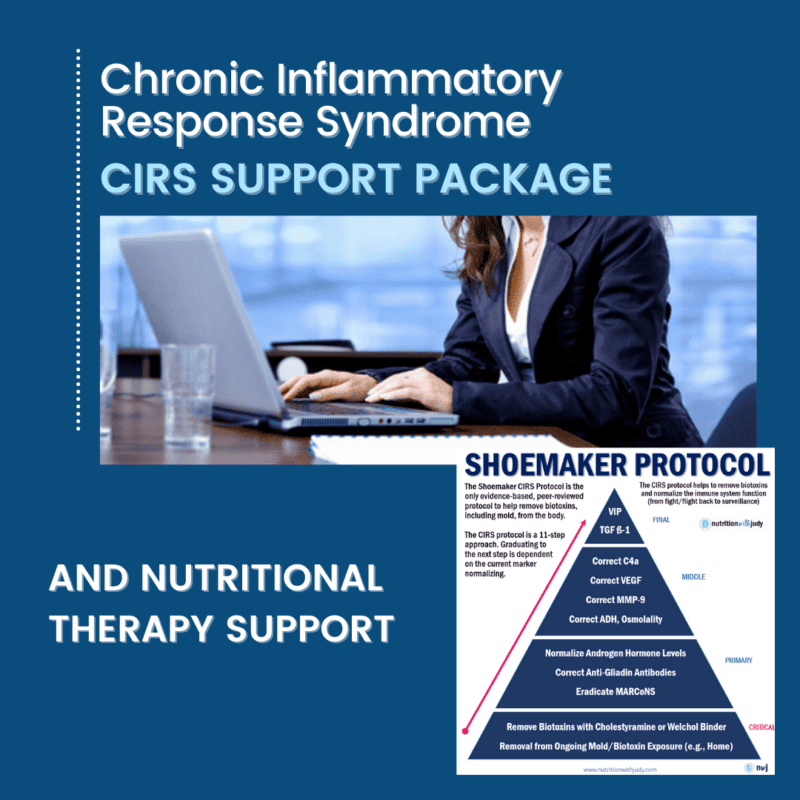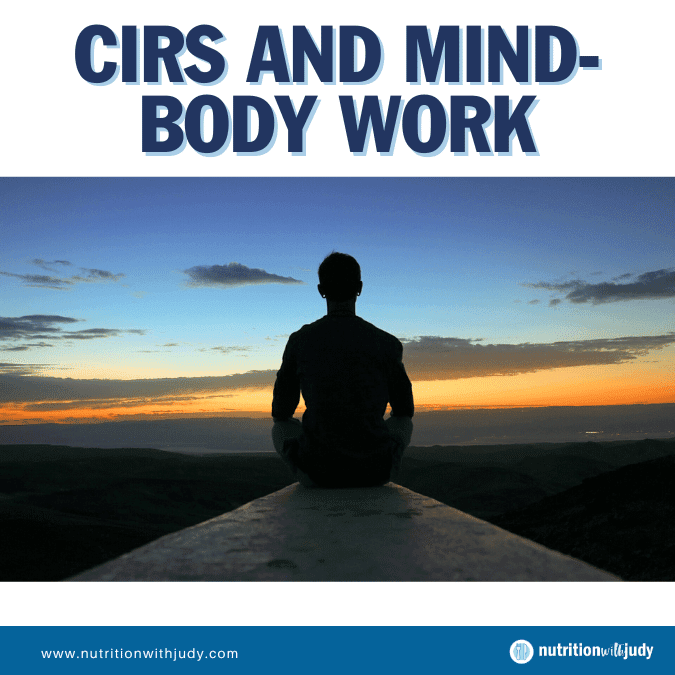

CIRS and Mind-Body Work


Mind-body practices are a critical, yet frequently underestimated, component in the treatment of Chronic Inflammatory Response Syndrome (CIRS). We’ll explore why integrating mind-body work is essential for the successful management and recovery from CIRS.
When the mind is dysregulated, it hampers the body’s ability to enter the necessary state for healing and regeneration. By addressing this foundational aspect, individuals can enhance their overall treatment strategy, setting the stage for more effective healing. Let’s take a closer look into various mind-body techniques that can support the mental and emotional equilibrium needed to foster physical health and combat the symptoms of CIRS.
What Is CIRS?
CIRS is identified as a complicated health condition marked by extensive inflammation and a variety of symptoms affecting numerous body systems, caused by an overactive immune system. Proper diagnosis of CIRS requires a comprehensive review of a patient’s medical history along with targeted laboratory testing. The varied symptoms of CIRS, which can significantly differ from person to person, frequently result in misdiagnosis or incorrect treatment. Unlike typical immune disorders, CIRS cannot be detected through standard autoimmune blood tests, which makes specialized diagnostic methods crucial for accurately identifying this condition.
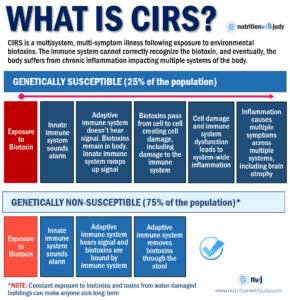

What causes the severe immune reactions and widespread inflammation seen in CIRS? The primary agents are biotoxins—natural toxic substances with a specific molecular weight, originating from a variety of sources:
- Water-damaged environments: Approximately 80% of CIRS cases stem from breathing air in environments damaged by water, laden with mold mycotoxins, bacteria, and various chemical irritants. These contaminants induce inflammatory reactions in those vulnerable to CIRS, with both active and inactive mold components causing significant inflammation in the body and brain.
- Insect bites: Bites from specific ticks and spiders can lead to persistent conditions such as chronic Lyme disease, which are caused by pathogens like Borrelia burgdorferi and Babesia microti. Toxins from recluse spider bites can also lead to enduring health problems.
- Seafood consumption: Consuming tropical reef fish contaminated with ciguatera toxin, linked to Pfiesteria and harmful algae blooms including cyanobacteria (blue-green algae), can provoke biotoxin-related health complications. The toxin levels increase as larger reef fish consume smaller fish that have ingested dinoflagellates.
- Contact with contaminated water: Exposure to or inhalation of water contaminated with algae blooms, such as Pfiesteria and cyanobacteria, can trigger the inflammatory responses associated with CIRS.
- Other biotoxin sources: Additional sources of biotoxins that may lead to CIRS include certain vaccines, viruses, volatile organic compounds (VOCs), endotoxins, and actinomycetes.
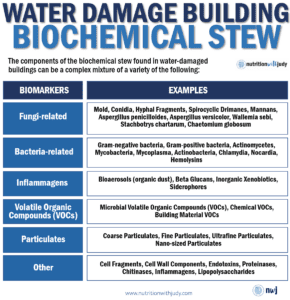

Due to their diminutive molecular size, biotoxins can breach cell membranes, rendering them almost invisible in routine blood tests. These toxins commonly enter the body via inhalation but can also be absorbed through ingestion, tick and spider bites, and direct contact with contaminated water.
Exposure to common biotoxins like mold does not invariably lead to Chronic Inflammatory Response Syndrome (CIRS); genetic predispositions and life stressors greatly affect an individual’s vulnerability to biotoxin-related disorders. Life events such as severe illnesses, surgical procedures, high fevers, pregnancies, substantial biotoxin exposures, and other traumatic experiences can induce a cytokine storm. This reaction may activate the CIRS gene in genetically susceptible individuals, particularly those with HLA-DR genes, indicating that CIRS can develop at any point in one’s life. Importantly, the lack of symptoms does not imply immunity, and genetic testing can play a crucial role in prevention.
Although biotoxins can trigger immediate sickness, the immune systems of most people are equipped to detect and eradicate these toxins effectively. However, for those genetically predisposed to CIRS, their immune systems are unable to recognize and eliminate these toxins, causing them to accumulate in the body. This leads to a continuous, intense immune response and widespread inflammation, which results in a range of symptoms and ongoing health complications.
The biotoxin pathway explains why CIRS is a multi-system, multi-symptom condition, you can learn more about the biotoxin pathway here.
For a more detailed understanding of CIRS, click here.
Pro-Tip: If you think you’re suffering from CIRS, start with our White Glove Service for comprehensive care.
Understanding the Toxin Bucket Concept
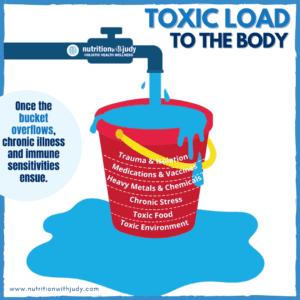

The idea of a “toxin bucket” provides a useful metaphor for understanding how various stressors accumulate in our bodies until symptoms begin to manifest. Imagine your body as a bucket; each stressor or toxin adds a little more to the bucket until it eventually overflows, which is when we start to experience physical or mental symptoms. The goal, then, is to manage these inputs effectively to prevent the bucket from overflowing.
Modern-day living can cause significant toxin accumulation for the general public. For individuals with CIRS, this is often even more exacerbated due to the nature of this condition and the body’s inability to properly identify and detox biotoxins.
Key Contributors to Your Toxin Bucket
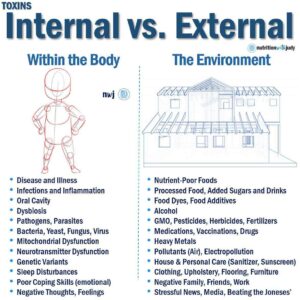

1. Trauma: Both physical and emotional traumas contribute to the filling of the toxin bucket. Traumatic experiences can trigger long-term stress responses in the body, leading to inflammation and other negative health effects.
2. Medications and Vaccines: While often necessary for managing health conditions, some medications and vaccines can introduce substances into the body that require detoxification, thus adding to the load in our toxin bucket.
3. Heavy Metals: Exposure to heavy metals, whether through the environment, food, or industrial contact, can significantly burden our body’s detoxification systems. Metals such as mercury, lead, and arsenic are particularly detrimental.
4. Stress: Chronic stress is a potent toxin. It affects hormonal balance, immune function, and can lead to chronic inflammation, all of which contribute to the toxin bucket.
5. Toxic Foods: Processed foods, foods high in sugars and unhealthy fats, and those containing artificial additives or pesticides can all add to the toxin load. These components are harder for the body to process and eliminate.
6. Environment: Polluted air, water, and exposure to mold or chemical toxins in our living or working environments also contribute to the overall toxin load.
That’s why many chronically ill and CIRS patients often feel symptom reduction on a carnivore diet, which eliminates all plant-based foods and focuses solely on animal products. By significantly reducing the number of potential toxins introduced through diet, this reduction can help lower the overall burden on the body’s detox systems, allowing it to manage other toxins more effectively.
The Role of the Dorsal Vagal System
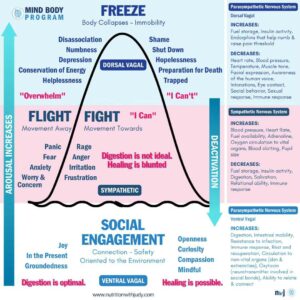

The dorsal vagal system, part of the parasympathetic nervous system, plays a crucial role in the body’s response to stress and trauma. When overwhelmed, the dorsal vagal system can trigger a ‘freeze’ response—a state of shutdown that helps conserve energy during times of acute stress but can lead to disengagement and depression if activated too frequently or intensely. Managing the load in your toxin bucket can help maintain a balance in the dorsal vagal activity, preventing it from tipping into this extreme response and promoting overall physiological stability and resilience.
We need to find our way to social engagement for optimal healing. The more panic we have, the further away from social engagement we become.
The Endocrine System and Stress
The endocrine system is a network of glands that produce and secrete hormones, which act as chemical messengers to regulate various bodily functions. These hormones travel through the bloodstream to organs and tissues, helping manage processes like metabolism, growth, and mood.
Stress has a profound impact on the endocrine system. When stressed, the body responds by activating several physiological systems, including the endocrine system, to adapt and survive the perceived threat. This response involves various glands and hormones, illustrating the complex interplay between stress and endocrine function.
1. Cortisol Response: Under stress, the adrenal glands release cortisol, known as the “stress hormone.” Cortisol’s primary function is to provide the body with the energy it requires to respond to stress by increasing glucose in the bloodstream, enhancing the brain’s use of glucose, and increasing the availability of substances that repair tissues. However, prolonged elevation of cortisol can lead to significant health issues, including weight gain, high blood pressure, disrupted sleep, and a weakened immune system.
2. Blood Sugar Regulation: Stress affects blood sugar levels directly through the action of cortisol and indirectly by influencing behavior patterns, such as diet and physical activity. Increased cortisol levels lead to higher blood glucose levels to provide immediate energy to deal with stress. Over time, this mechanism can strain the body’s ability to manage blood sugar, potentially leading to insulin resistance and diabetes.
3. Adrenal Health: The adrenal glands are directly involved in the body’s stress response by producing cortisol and adrenaline. Chronic stress can lead to adrenal fatigue, where the glands are overwhelmed and can no longer maintain an adequate response, leading to a host of symptoms such as fatigue, irritability, and decreased stress tolerance.
4. Thyroid Function: Stress can also impact thyroid function, which regulates metabolism. The hormones produced by the thyroid gland influence nearly every cell in the body and are vital for proper metabolic rate. Stress can lead to alterations in thyroid hormone levels, affecting overall energy levels, body temperature, and metabolism.
5. Pituitary Gland: Often referred to as the “master gland,” the pituitary gland controls several other hormone glands in the body, such as the thyroid and adrenal glands. Stress can affect the release of hormones from the pituitary gland, which in turn can disrupt the entire hormonal balance of the body, affecting growth, reproductive systems, and overall homeostasis.
The Limbic System and CIRS
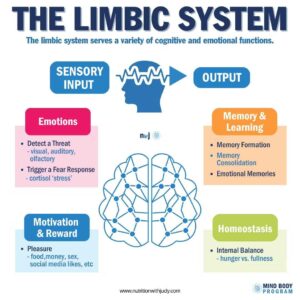

The limbic system is a complex set of structures located within the brain that handles a variety of functions including emotion, behavior, motivation, long-term memory, and olfaction. It is often referred to as the emotional brain because it governs our emotional responses and plays a role in forming memories, particularly those linked to emotions.
The Limbic System’s Role in CIRS
CIRS is primarily a condition triggered by biotoxin exposure, often leading to a wide range of systemic reactions due to an overactive immune response. The limbic system is crucial in this context because it also regulates the body’s stress response, which can exacerbate or influence the symptoms of CIRS. Training the limbic system to manage these responses more effectively is a vital component of managing CIRS.
Pairing Mindset with the Shoemaker Protocol
To effectively combat CIRS, it’s recommended to pair the Shoemaker Protocol—a treatment regimen focused on eradicating biotoxins from the body—with techniques aimed at regulating and retraining the limbic system. This dual approach helps by not only addressing the physical aspects of the illness but also by mitigating the psychological stressors that can aggravate the condition.
Symptoms of Limbic System Dysregulation in CIRS
Dysregulation of the limbic system can manifest in numerous ways, particularly in how the body and mind respond to environmental and internal stressors. Here are some common symptoms associated with limbic system dysregulation in the context of CIRS:
- Hypersensitivity to the Environment: Individuals may become excessively sensitive to their surroundings, reacting strongly to scents, lights, sounds, or other stimuli.
- Blood Pressure and Heart Rate Issues: Fluctuations in heart rate and blood pressure can occur, often as a response to stress or environmental triggers.
- Over-Reactivity to Chemicals: A heightened reaction to chemicals, which are often not problematic for others, can signify limbic system dysregulation.
- Headaches and Migraines: Frequent headaches or migraines can be a symptom, exacerbated by stress or particular triggers linked to limbic system activity.
- Body Temperature Dysregulation: Difficulty in regulating body temperature effectively, resulting in episodes of feeling unusually hot or cold without apparent reasons.
- Fatigue: Persistent tiredness or fatigue, which does not seem to improve with rest.
- Digestive Issues: Problems with digestion, including irregular bowel movements, gas, or bloating, can also be related to an overactive limbic response.
- Mood Swings: Emotional instability or sudden changes in mood could reflect limbic system disturbances.
- EMF Sensitivities: An increased sensitivity to electromagnetic fields, such as those from phones or Wi-Fi, can also indicate a limbic system issue.
Pro-Tip: Constant research and going down the rabbit hole on wellness topics can be a sign that your limbic system is in flight or fight mode.
CIRS Healing Is Multi-Faceted
CIRS is a complex condition that demands a multi-faceted treatment approach. True healing from CIRS involves more than just addressing the root cause of physical symptoms; it requires a holistic strategy that encompasses the mind, body, and environment. Understanding and treating these interconnected aspects can significantly enhance recovery and overall well-being.
The Interconnection of Spirit, Mind, and Body
The integration of spirit, mind, and body is central to holistic health. In the context of CIRS, where stress and emotional distress can exacerbate physical symptoms, learning to let go of control becomes a therapeutic strategy. Letting go helps lower stress and reduces the cortisol response, which is crucial because prolonged exposure to cortisol can worsen inflammation and impede healing.
Addressing the Mind: Mental Health and Stress Management
Mental health is a critical component of healing CIRS. Patients often experience significant stress from dealing with chronic illness, which can trigger or worsen symptoms. Effective stress management techniques such as mindfulness meditation, cognitive-behavioral therapy, and emotional counseling can help mitigate the psychological burdens of CIRS. These practices aid in calming the mind, reducing anxiety, and fostering a more positive outlook, which are vital for reducing the body’s stress response and promoting healing.
Addressing the Body: Physical Health and Medical Interventions
Physical health in CIRS involves both direct medical treatment and broader lifestyle adjustments. The Shoemaker Protocol provides a foundation by addressing the biotoxin load in the body. However, comprehensive physical healing also involves nutritional support, ideally through the carnivore diet to reduce inflammation, and physical therapies to strengthen the body, support detox pathways, and improve overall health. Regular exercise tailored to the patient’s capacity can also enhance detoxification processes and boost immune function.
Addressing the Environment: Reducing Toxin Exposure
Environmental management is crucial in treating CIRS, as ongoing exposure to biotoxins can continue to trigger symptoms. Creating a safe and healthy living environment involves removing mold, avoiding chemicals known to trigger reactions, and ensuring clean air and water in the home. Patients are encouraged to become advocates for their health by learning about and mitigating environmental risks.
The Role of Spirit: Emotional Resilience and Community Support
The spiritual aspect of healing often involves developing emotional resilience and tapping into community or faith-based support. Spirituality, whether through organized religion, personal belief systems, or community involvement, can provide significant emotional sustenance and a sense of purpose. This support is invaluable, as it helps individuals cope with the challenges of a chronic condition such as CIRS.
Closing Thoughts On CIRS and Mind-Body Work
We’ve found that mind-body work can often be the missing piece required for healing in our patients and clients. Particularly for our CIRS patients, mind-body work can be just as foundational as getting out of exposure. It’s important to note that mind-body work and the Shoemaker Protocol are just as equally significant for CIRS treatment. While these tools are critical for optimal healing, you can’t limbic your way out of CIRS and skip treatment altogether.
Instead, we designed our Mind Body Program in mind to work in tandem with the Shoemaker Protocol while also supporting other chronic illnesses, mental health concerns, as well as stressful life experiences and trauma.
Pro-Tip: Are you looking for actionable tools to support your root-cause healing journey? Our Mind Body Program offers the most comprehensive, research-based resource with a balanced blend of mental and physical health strategies along with like-minded community support. Join our waitlist for the next upcoming cohort here.
Work With Our Trusted CIRS Practitioners
The Nutrition with Judy practice is honored to be a trusted CIRS practitioner support serving clients from around the globe. We’re passionate about helping our clients achieve root-cause healing in order to lead the best quality of life possible that’s nearly symptom-free. Our team is dedicated to finding the answers our patients need. We welcome you to explore our free resources and are always available to support you through personalized protocols. If you’re interested in working one-on-one with our CIRS nutritional therapy team to support you through your journey, our CIRS Support Package delivers the support and accountability for achieving root-cause healing.
Start your root-cause healing journey today and contact us any time with any questions or concerns.
DISCLAIMER: This content is for educational purposes only. While we are board-certified in holistic nutrition and are nutritional therapy practitioners, we are not providing medical advice. Whenever you start a new diet or protocol, always consult with your trusted practitioner first.


